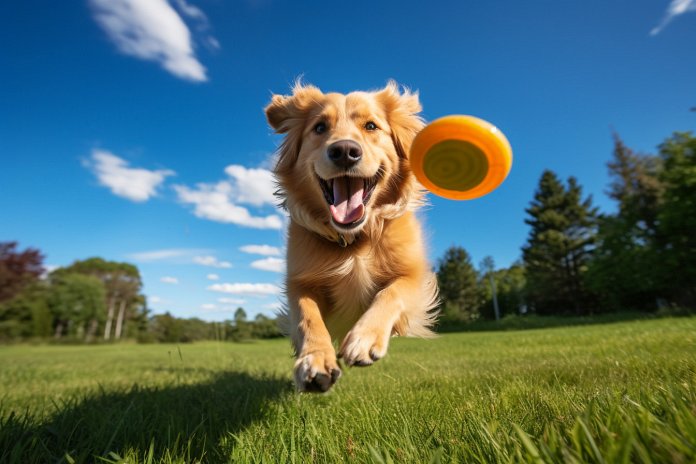
Playing Frisbee with your dog can take fetch to a new level, but teaching them to catch a flying disc may not come naturally. This article will guide you on how to train your dog to become a Frisbee-catching pro.
Signs Your Dog Wants to Play Frisbee
There are a few signs that indicate if your dog will excel at playing Frisbee. If your dog loves playing fetch, shows excitement and happiness, and has good athletic skills like jumping and catching objects, they may be a good candidate for Frisbee.
Body Language
Pay attention to your dog’s body language for signs that they want to play Frisbee, such as being alert, barking, wagging their tail, raising their ears, or play bowing.
The Science of Dogs Loving Frisbee
Many dogs love playing Frisbee because it taps into their natural instinct to retrieve and please their owner. Breeds that were bred for retrieving and hunting tasks often have a strong prey drive and athletic ability, making them more likely to enjoy Frisbee.
Training Your Dog to Play Frisbee Toss
Some dogs may need training and guidance to understand how to play with a Frisbee. Start by introducing the disc to your dog, then gradually teach them to catch and retrieve it through gentle games and rewards. Finally, progress to throwing the Frisbee in the air at easy catching heights and gradually increase the distance and height.
Conclusion
While certain breeds may be more inclined to enjoy Frisbee, dogs of all shapes and sizes can be taught to love the sport. Remember to be patient, adapt to your dog’s learning pace, and keep training sessions short and focused for the best chance of success.
“Teaching your dog to catch a Frisbee may not come naturally, but with patience and training, you can unlock their impressive disc-catching skills.”

Tips & Things to Know
1️⃣ Look for signs that your dog may enjoy playing Frisbee, such as a love for fetch and good athletic ability. These indicators suggest that your dog may excel at catching a flying disc.
2️⃣ Pay close attention to your dog’s body language, including signs like alertness, barking, wagging tail, raised ears, and play bowing. These cues can indicate that your dog is eager to play Frisbee.
3️⃣ When training your dog to play Frisbee, start with introducing the disc, then progress to gentle games of catching and retrieving. Gradually increase the difficulty by rolling the disc and eventually throwing it in the air. Remember to be patient and keep training sessions short and focused to set your dog up for success.
Frequently Asked Questions, Answered ✅
1. What are some signs that indicate a dog will enjoy playing Frisbee?
– Signs include a love for playing fetch, high energy levels, jumping and catching abilities, and a good level of general athletic ability.
2. Why do some dogs love playing Frisbee?
– Dogs have a natural instinct to retrieve and please their owners, which the sport of Frisbee taps into. Many breeds were developed for retrieving tasks, making them effective hunting companions. Catching a disc allows dogs to fulfill their natural instincts and provides them with enjoyment.
3. How can I train my dog to play Frisbee?
– Start by introducing the disc to your dog and gradually increase their interest using treats or encouragement. Begin with gentle games, such as tug of war, to get them used to catching and retrieving the disc. Progress to rolling the disc along the ground and finally throwing it in the air, starting with short-range throws and gradually increasing the distance and height.
4. What are some recommended dog breeds for playing Frisbee?
– Labrador Retrievers, German Shorthaired Pointers, Australian Shepherds, and Border Collies are known to excel at Frisbee. However, dogs of all breeds and sizes can be taught to love the sport.
5. How should I approach training sessions for Frisbee playing?
– Take a patient approach and allow your dog to learn at their own pace. Keep training sessions short and focused to maintain their interest. Mix up the training methods if needed and be prepared for individual differences in learning ability.